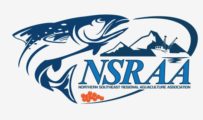While Thomas Bay is NSRAA’s most recent remote release site to come online, the conceptualization for this site took place decades ago. The area was first visited by NSRAA staff around 1988 as a cooperative project with the United States Forest Service, looking for potential freshwater stream incubation boxes. A few years later the site was examined for the potential for saltwater rearing, however it was not actively pursued until (prompted by tanking survivals at Hidden Falls Hatchery) NSRAA requested both Thomas Bay ant Port Malmsbury as options for alternative raring locations. Both sites were permitted and NSRAA chose to pursue Thomas Bay, largely due to logistical concerns at Malmbsbury, Thomas Bays proximity to Petersburg, and support from ADF&G in the site being of little concern for hatchery/wild interactions. Test fishing was conducted in 2016, prior to any releases at Thomas Bay and just one year of fishing was enough to conclude that wild stock interception would not be an issue.
Final approval came by way of a signed permit in January 2017 and the new Terminal Harvest Area was open for business, with a small exclusion zone on Sunday’s catering to a local sport fishing fleet. With the planning and permitting phase complete, the logistical challenge of getting quickly maturing alevin into net pens loomed. Staff who had been standing by with new pens and an old feed barge had to get the infrastructure in place quickly and had pens built within a week of fish being salt water ready.
The second year of chum rearing at Thomas Bay was a testament to the hard work and resilience of NSRAA staff. When staff first arrived on site to deliver the feed barge, they found that the sea ice was unbreakable, roughly 8-0” thick. Unfortunately, the 40-million fry would not be able to wait much longer, so the pressure was on to break up the ice pack and get the site fish ready before the ice would melt on its own. Staff held off as long as possible and returned to the site March 5th. Ice had cleared out of most of the bay, however staff had to walk the final 200 yards of snow encapsulated ice to reach the anchored pens. For the next twenty-four hours, NSRAA staff shoveled snow, chipped a hole through the ice, and pumped seawater until the pens were clear. Just two days later the fish arrived. But the struggles did not end there. Ice and snow made the first month of rearing a challenge and staff were up early every day breaking up ice so that they could feed throughout the day.
Fortunately, subsequent years have had much more favorable conditions for rearing. The ice that had created such problems early on has not since returned. While conditions on site have been favorable, fry transports to Thomas Bay are still a logistical challenge, as they require a 11 hr (one way) trip from Hidden Falls to the rearing site. This is the farthest that NSRAA currently transports fish. Thanks to experienced vessel captains and staff, as well as some ingenuity, the fry arrive on site healthy each year and show excellent growth.
Marine survivals to date for Thomas Bay have been poor. It remains to be seen whether this is due to the generally poor survival period that we have been experiencing with our inside summer stock chum, or if the site is just not conducive to good adult survival. Thomas Bay fish are intercepted in multiple fisheries that are sampled by NRAA evaluation staff and as of 2023, have not shown any favorable returns on investment thus far.
With Hidden Falls returns now reaching historically high survivals once more, NSRAA is optimistic that its newest rearing site will come to fruition and sustain a viable fishery.
Breaking the ice pack during Spring ponding 2018.




